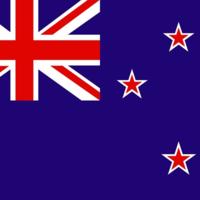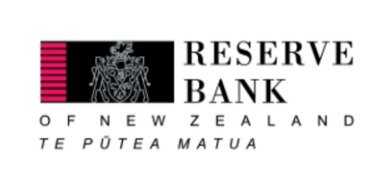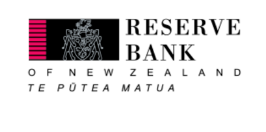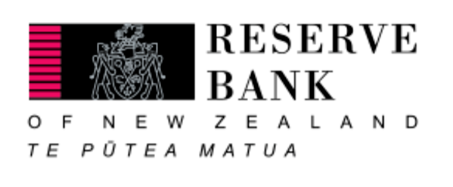Testing our resilience
Introduction
Thank you for the opportunity to talk today and it is pleasing that it is in person following a series of virtual meetings in recent times. It is also a privilege to be presenting here alongside the Financial Markets Authority CEO Samantha Barrass. Our institutions are working increasingly hand-in-hand, which makes complete sense for our financial industry.
I am deliberately keeping my remarks high level. You will be hearing from Te Pūtea Matua multiple times over the coming weeks. Between now and end-November you will be treated to our Financial Stability Report, our 5-yearly review of our monetary policy activities, our Monetary Policy Statement, and round two of public consultation on the 5-yearly review of our Monetary Policy Remit.
The Financial Stability Report to be released next week provides a rich assessment of the financial system and broader economy. The most obvious theme will be the resilience of our financial system to manage through challenging economic times. New Zealand is not unique in facing growing economic challenges — they are global in their making. However, New Zealand is well positioned to manage.
Over recent months I have been able to re-engage with many global economic policy makers face-to-face — most recently at the IMF and World Bank joint annual meetings in Washington DC. While people were genuinely pleased to meet in person again, that’s where the fun stopped. The content of the meetings was far from positive.
Global economic challenges are large and upon us
The world economy is experiencing high inflation. This means central banks globally— the Reserve Bank of New Zealand included are working to actively slow domestic spending by raising interest rates so as to constrain inflation. This means employment prospects will be increasingly compromised, as people delay their spending and investment decisions.
The trade-off of the long-run benefits of low and stable inflation versus near-term spending and employment is being confronted in virtually every country simultaneously. Figure 1 provides a timely snapshot of the current inflation and unemployment position across countries. New Zealand is relatively well positioned but inflation is still too high in an absolute sense. Nations who are most impacted by food and energy price spikes and shortages stand out significantly with double-digit inflation rates.
The global coincidence of the monetary policy tightening is not surprising. COVID has been a global shock to the productive capacity of the entire planet. People are worse off for it, and spending plans have been radically disrupted. We are still working through the lingering economic impacts of the lingering virus.

The data in this graph is sourced from the OECD database and the Australian Bureau of Statistics. The latest available data-points have been used — unemployment data for 2022Q2 for all countries, and inflation data for 2022Q3 for all countries except Costa Rica (CRI) for which only 2021Q4 data is obtainable. Turkey has been omitted since it is an outlier with an exceptionally high inflation rate of 81%.
Download the graph of inflation and unemployment figures (jpg, 294KB)
How are financial and economic stresses manifesting at present?
There was a significant list of concerns repeated in many languages and accents at the recent IMF meetings. The list of near-term pressures goes something like:
Returning to low inflation will, in the near-term, constrain employment growth and lead to a rise in unemployment. The actual extent of this trade-off remains unclear however, given the significant labour shortages globally and the very different means of employment being adopted post-COVID. Importantly, it is highly unlikely that we are at maximum sustainable employment if inflation is still high and variable.
Rising nominal interest rates globally are, and will continue to, test the resilience of the financial system and all economic participants. The financial system is complex, making it hard to pinpoint what, if any, particular achilles heel exists in real time. All we know is that the financial system has experienced many legal, operational, financial and/or reputational problems in the past – few of which were predictable in timing or scale. Most recently, for example, in the UK we saw liquidity issues rapidly escalate in their pension-investment industry as an unintended consequence of fiscal policy announcements. Meanwhile, in other countries, IMF and World Bank financial assistance is being drawn on heavily to manage through both short-term food and energy crises, and longer-term climate change risk mitigation and adaptation.
Notable also is the growing home bias and flight to quality being expressed by global investors as they shift their capital. Supporting these trends is the heightened geopolitical risks that exist, leading to increased fragmentation in global trading blocs and economic reliance.
The rising US dollar value relative to most other currencies in the world is an important symptom of these capital movements. Aside from appearing as an investor’s safe haven, the US Federal Reserve is appropriately lifting their interest rates in order to constrain consumer price inflation. US dollar deposits are now yielding more and hence attracting global capital inflows.
A strong US dollar provides challenges to smaller-open economies. For example, nations with US-pegged or managed exchange rates are needing to use their foreign dollar reserves to support their currency. Those nations with floating exchange rates — such as New Zealand — are experiencing higher imported cost pressures, which can lead to longer-term embedded inflation if expectations become unanchored.
There is also rising tension globally between monetary policy aimed at low and stable inflation, and governments’ longer-term fiscal priorities. Governments are looking to provide the necessary support to those people most impacted by geopolitical tensions — for example, defence, food, and energy support), and health and wellbeing related expenses accentuated by the COVID pandemic — amongst many other priorities.
This fiscal tension is further accentuated by the need to progress climate change adaptation. Investment is needed at scale to manage a transition to more environmentally-sustainable forms of economic production. Investment will put demand pressure on resources and hence inflation in the near-term. Likewise, there are potential one-off relative energy price changes as nations move away from fossil fuels to more sustainable alternatives.
The rising geopolitical tensions are also significantly constraining global trade. This is concerning when you consider how important the decline in the relative price of technology-related goods has been in maintaining low inflation over recent decades. Less access to shared resources and technology globally will slow potential output growth — all other things equal. Sudden changes in trade access will have significant economic effects.
The tensions mentioned above between inflation and employment, rising interest rates and financial stability, monetary and long-term fiscal policy, geopolitical concerns and climate change are already testing political consensus within and between countries. The most used word of the IMF and World Bank meetings was fragmentation of global trade and policy consensus.
These are some of the urgent challenges facing the global economy. Just for completeness, let’s not forget the important challenges that existed prior to this COVID-affected business cycle.
I have already briefly mentioned the critical issue of climate change adaptation. However, it is more, not less, pressing now due to the geopolitical tensions forcing energy prices up and prolonging the use of fossil fuels.
In addition, most large economies notably including China — have ageing populations. New Zealand is included in this demographic. The ratio of dependent-to-working-age population is rising rapidly. The health and fiscal costs associated with the ageing population is significant. At the broadest brush, the youth are primarily in less developed countries and in need of significant investment in capability and capacity so as to be engaged fully in the global economy. Whether global migration will be managed or chaotic is a pressing global choice that cannot be avoided.
I will finish my list of things to worry about with the obvious – the ongoing global health challenges related to COVID strains, and the ability to retain social cohesion as people compete for resources. Humanity has been truly challenged by the pandemic. We are managing, but we need to continue to collaborate.
What policy options were offered up by the congregation of economic policy makers?
The IMF and World Bank formula for success is best summarised in the following 4 key areas:
- Inflation needs to be contained in a goldilocks manner, where tightening is sufficient to tame inflation expectations, but without sending countries into a deep recession.
- Fiscal policy needs to be at the least targeted and temporary. Targeted toward the people most impacted by higher food and energy prices, and temporary in that policies can be removed when the circumstances permit.
- Financial resilience building is critical, so that the financial system can do what it does best, allocate resources to their best long-term use. This is especially so in the rapidly growing ’non-bank’ sectors of the global financial system.
- Ongoing structural reform is required to enhance productivity and enable the flow of resources to efficient use. It is this area of global economic policy that has received least attention for some time, with the focus being on monetary and fiscal stabilisation through the COVID years, and now war, energy constraints, and food shortages.
The 4 steps to ongoing economic resilience are firmly within the New Zealand way of doing things. We are in relatively good stead. Next week we will be publishing our biannual Financial Stability Report, outlining our latest assessment of the soundness and efficiency of the country’s financial system.
I am pleased to provide a teaser in that New Zealand’s financial system remains well placed to support the economy — with banks’ capital and liquidity positions strong, and profitability and asset quality high. However, there will be stresses in business and amongst households as interest rates and asset prices adjust. Of critical importance to overall financial stability will be the robustness of the labour market.
In regards to our monetary policy objective, we have our eyes firmly focused on meeting our inflation target. We’ll be back at the end of November with our full Monetary Policy Statement and outlook ahead.
Our work reviewing our monetary policy in the past 5 years is also near delivery. This will canvass what the Monetary Policy Committee did and why, what worked, and what we could have done better – the lessons from our experience. The work is being reviewed by independent experts and our new Board, and will be published mid-November.
Finally, I want to acknowledge the important work the Financial Market Authority and our other Council of Financial Regulators partners are delivering to support the functioning of New Zealand’s financial system. Our individual work plus our collective themes – climate, technology, data, and inclusion – will help ensure that New Zealand has a world-class financial system.
In summary, I am confident that New Zealand is in a strong absolute and relative position to manage the challenges ahead, and that we will work together to tackle these issues. Thank you for the opportunity to join you today, it really is great to be here in person, and I hope you enjoy the rest of the conference.






















































First, please LoginComment After ~